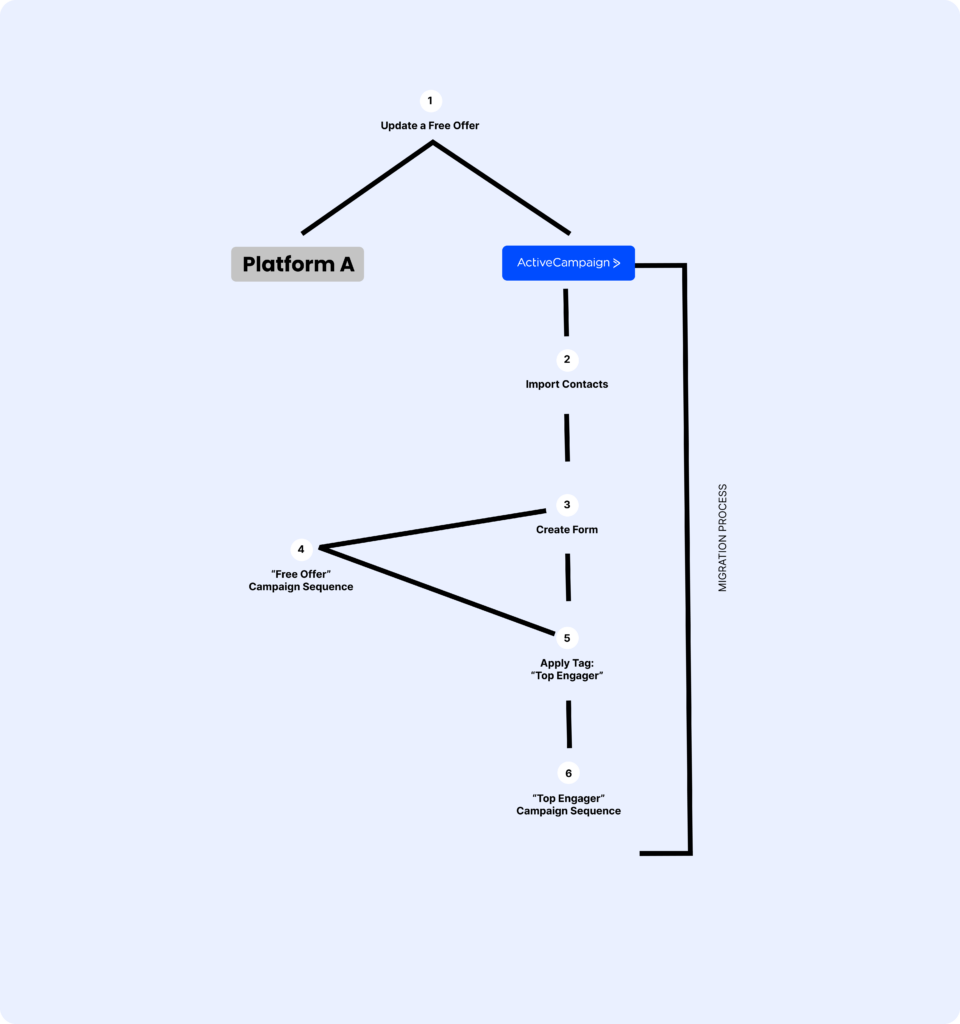Nothing is more frustrating than spending the time to craft a new message to your contacts to see that no one has opened it and read the content that you built just for them.
Before you rage spiral at your contacts, they may have never even received the message that you tried to send to them! So let’s chat about email deliverability and why it is vital to your email marketing strategy and the overall success of your business.
What is deliverability and why is it important?
There are 6 main aspects of ensuring your email is delivered successfully and the most important one is something we’ve already taken care of for you. It is the sender’s reputation. We pride ourselves on having the best sender reputation in the industry. Don’t just take it from us, recently we were thrilled to have been named a leader in deliverability by EmailTooltester, and #1 in Email Marketing for 2023! Moving from another platform to a reputable provider like ActiveCampaign will temporarily lower your deliverability rate but it will quickly pick back up in no time.
In this guide, we’ll explain why your deliverability rate may temporarily be lowered when you switch to a new platform, and provide a strategic plan to ensure a rapid restoration and even increase in deliverability after you make your move.
Why platform migration affects deliverability
Before we chat about strategies, let’s cover some basics.
How does Email Deliverability work?
Email deliverability measures the ability to deliver emails to a recipient’s email inbox. Deliverability is also related to inbox placement – whether your email appears in the primary inbox, the promotional tab, or the spam folder. The best email content in the world can’t make up for poor deliverability.
The 6 main aspects of ensuring your email is delivered successfully are as follows:
- Practice email list hygiene
- Send engaging content
- Choose double-opt-in
- Make it easy to unsubscribe
- Monitor your campaigns
Choose a reputable provider(You’ve already signed up for ActiveCampaign!)
Once you’ve created your ActiveCampaign account, there are a few things to keep in mind that will help facilitate your transition and maintain good deliverability (and even bring it up!). We’ll go over those in this guide.
Let’s say you’re starting from scratch on Platform A to build an email list and begin your email marketing efforts. Your relationship with your contacts begins when they enter your platform (hopefully) by submitting a form. I say hopefully because we recommend bringing as many of your contacts into your platform via the form as possible because that ensures that the contact is showing interest from the jump.
Think about it, would you give your information to a store if you weren’t interested in hearing from them? And what is the best way to ensure that someone will open your message? Sending them content that they are actually interested in!
Okay, now that we have that covered we can move to the next step.
Since you’ve been using Platform A to build your list and communicate with your contacts, Platform A has the relationship with all of your contacts. Your contact’s inboxes “trust” the server you send your communications from and that’s what a lot of our users misunderstand when they migrate to ActiveCampaign.
The contact-sender relationship (aka sender reputation) is specific to the platform on which it was established.
This means that, once you migrate to ActiveCampaign, your relationship with contacts in your database and overall reputation starts from scratch. Even if your contacts and your sender name are all the same, the relationship does not carry over because it was established on Platform A.
But that doesn’t mean your deliverability is doomed if you switch platforms! You just need to give ActiveCampaign some time to warm up and get to know you and your contacts.
So what can you do to make the best impression?
Maximize engagement during the migration process
We recommend a 3-6 month strategic plan to help you establish a good relationship with your new platform right off the bat. You will need access to both your initial platform and the new platform you are migrating to, so be prepared to maintain your account with the initial platform for at least 30 days after you begin the migration process.
Note: Ideally, you will have some kind of free offer you previously created, such as a demo, whitepaper, or ebook, available to leverage in this plan.
Here’s what you can do to maximize engagement and streamline the relationship-building process when migrating to ActiveCampaign:

- To begin, choose one of your free offers to help rebuild the relationship via ActiveCampaign automation. The free resource should be enticing to both new and existing contacts. For example, you could offer a digital workbook, update a whitepaper, or share a discount code.
- Import your contacts into ActiveCampaign. Then, tag those contacts with a source tag: “ SOURCE – Platform A.” You can also do this in the import to make things much easier. To learn how you can visit: How to Import contacts into ActiveCampaign from a CSV file
- Create a form in your ActiveCampaign account that will allow your contacts to opt-in to receive your free offer. Make this easy to fill by limiting the number of fields to only the information you need to send the free offer. This is not the time to try and learn everything about your contacts! Back in Platform A, send a sequence of campaigns (2-3 emails over 1-3 weeks) to all of your contacts, containing a link to the ActiveCampaign form to fill out to receive the free offer. In this step, you’re using your reputation with Platform A to improve your future deliverability rate with ActiveCampaign. This does a couple of things for you:
- It directs traffic to a form that can capture contact information in ActiveCampaign.
- It allows you to see who your most engaged contacts are—the contacts who open/click/opt-in to your free offer. (If your previous platform doesn’t provide engagement tracking, this is also a great way to learn who is most interested in the content you are sharing!)
- In ActiveCampaign, apply a “Top Engager” tag to the contacts who open, click and opt-in to the free offer. Now you can identify your most engaged contacts. Note: It’s stronger to have your contacts fill out a form than to simply import them. While ActiveCampaign asks for imported contact origination information, a contact that opts in through a form signals an even stronger level of engagement. So, ActiveCampaign learns that they’re engaged contacts.
- Upon completion of the initial free offer campaign sequence, switch to ActiveCampaign to begin another ongoing sequence sent only to the contacts with a “Top Engager” tag.
By sending consistently (whether weekly, monthly, or every time you have new/updated content to share) to your most engaged contacts in the first few months or so after your migration, you demonstrate to your new platform that your contacts really want to receive your content. Later, you can start a campaign sequence targeting the imported contacts who are less engaged, to see if you can nudge them into “Top Engager” status.
You got this! In addition, we have a team ready to assist you if you have any questions along the way.
Closing Remarks
If you can’t follow the exact strategy outlined above, don’t worry—you can still set yourself up for strong deliverability in a new platform by keeping the following key points in mind:
- Coordinate your migration to a new platform with the launch of a new product or a free offer. If you can offer something enticing that will help ensure your contacts open your campaign, you can rapidly establish a good relationship with your contacts in the new platform.
- Add as many of your existing contacts as possible into your platform via form submission rather than a .csv upload. If a new contact submits a form, receives a “Welcome!” email and opens it right away, your deliverability rate will be in great shape.
- Take care to send communications that your audience is excited to receive, and that you’re messaging them on a regular basis. If you’re not targeting the right audience with the right content, your emails could land in the dreaded Spam folder.
For more deliverability best practices read our guide on email deliverability best practices.
If you use the strategic plan outlined above, we’d love to know how it worked for you! Let us know in the comments below.



